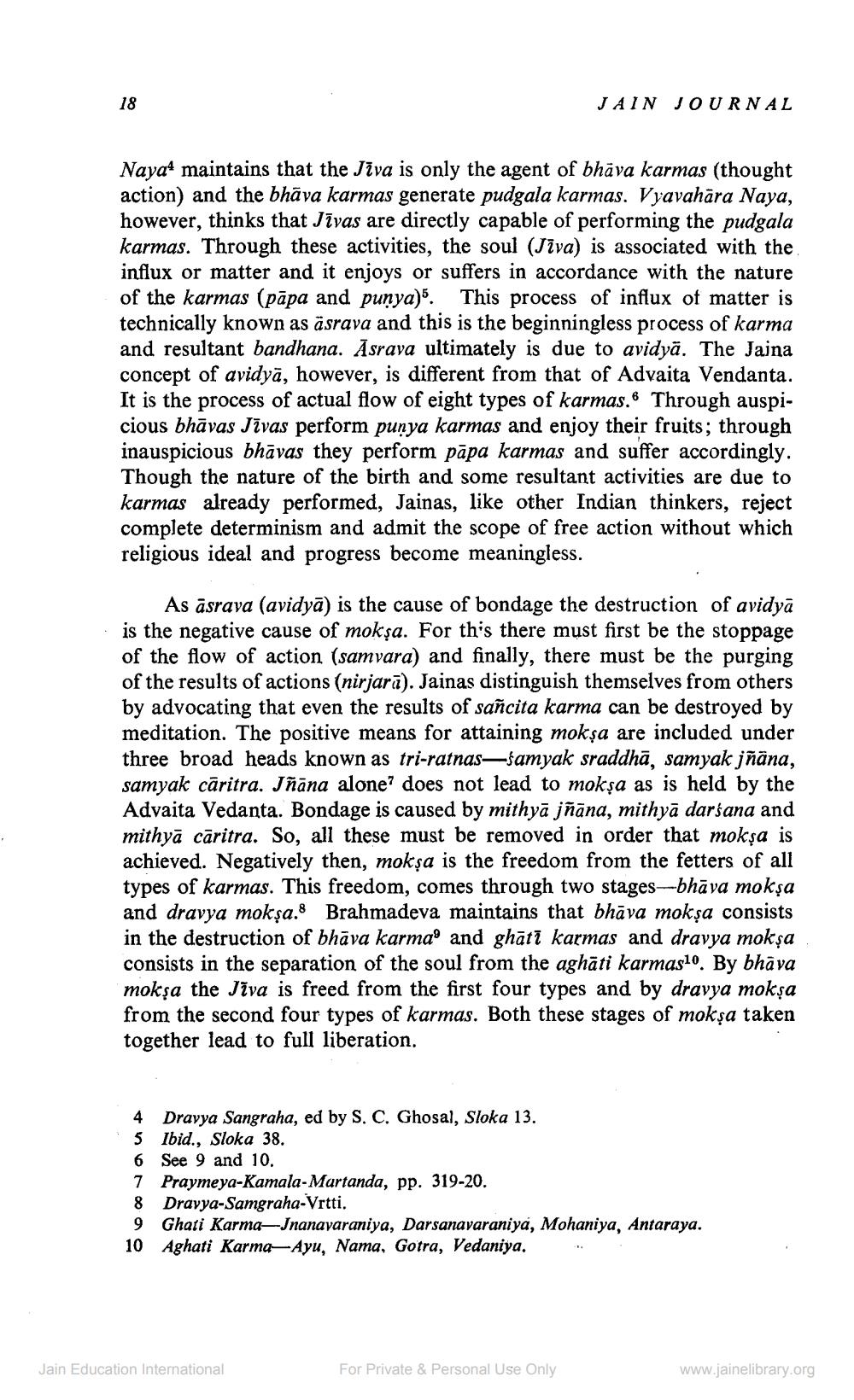________________
18
JAIN JOURNAL
Naya4 maintains that the Jīva is only the agent of bhāva karmas (thought action) and the bhāva karmas generate pudgala karmas. Vyavahāra Naya, however, thinks that Jīvas are directly capable of performing the pudgala karmas. Through these activities, the soul (Jiva) is associated with the influx or matter and it enjoys or suffers in accordance with the nature of the karmas (pāpa and punya)". This process of influx of matter is technically known as äsrava and this is the beginningless process of karma and resultant bandhana. Āsrava ultimately is due to avidyā. The Jajna concept of avidyā, however, is different from that of Advaita Vendanta. It is the process of actual flow of eight types of karmas. Through auspicious bhāvas Jīvas perform punya karmas and enjoy their fruits; through inauspicious bhāvas they perform pāpa karmas and suffer accordingly. Though the nature of the birth and some resultant activities are due to karmas already performed, Jainas, like other Indian thinkers, reject complete determinism and admit the scope of free action without which religious ideal and progress become meaningless.
As ásrava (avidyā) is the cause of bondage the destruction of avidyā · is the negative cause of mokşa. For this there must first be the stoppage
of the flow of action (samvara) and finally, there must be the purging of the results of actions (nirjarā). Jainas distinguish themselves from others by advocating that even the results of sañcita karma can be destroyed by meditation. The positive means for attaining mokșa are included under three broad heads known as tri-ratnas-samyak sraddhā, samyak jñāna, samyak cāritra. Jñana alone? does not lead to mokşa as is held by the Advaita Vedanta. Bondage is caused by mithyā jñāna, mithyā darśana and mithyā cāritra. So, all these must be removed in order that mokṣa is achieved. Negatively then, mokşa is the freedom from the fetters of all types of karmas. This freedom, comes through two stages-bhāva mokşa and dravya mokşa.8 Brahmadeva maintains that bhāva mokșa consists in the destruction of bhāva karmao and ghātī karmas and dravya mokşa consists in the separation of the soul from the aghāti karmaslo. By bhāva mokşa the Jiva is freed from the first four types and by dravya mokşa from the second four types of karmas. Both these stages of mokşa taken together lead to full liberation.
4 Dravya Sangraha, ed by S. C. Ghosal, Sloka 13. 5 Ibid., Sloka 38. 6 See 9 and 10. 7 Praymeya-Kamala-Murtanda, pp. 319-20. 8 Dravya-Samgraha-Vrtti. 9 Ghati Karma, Jnanavaraniya, Darsanavaraniya, Mohaniya, Antaraya. 10 Aghati Karma-Ayu, Nama, Gotra, Vedaniya.
Jain Education International
For Private & Personal Use Only
www.jainelibrary.org




